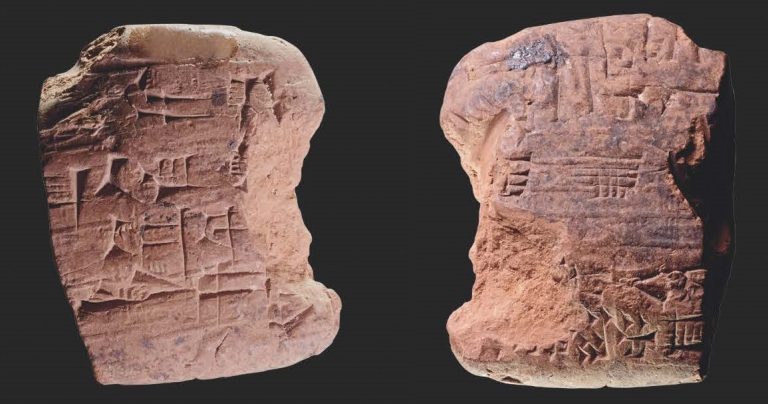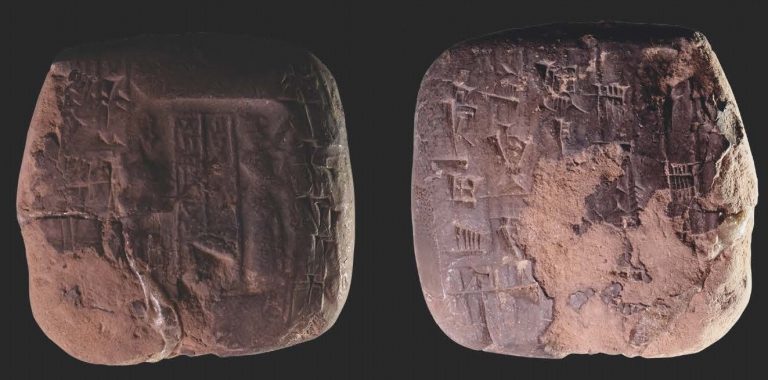Tablets of Umma
Umma is the name given to the place called Sat al-Hay and Sat al-Kar, in the northwest Lagash/tello region in southern Iraq. Tablets from this region are dated to the Neo-Sumerian (Ur III) Period (2112-2004 BCE). It is known that five kings that existed during the Third Dynasty of Ur reigned for about 100 years. This dynasty is famous for its economic tablets giving information on administrative and bureaucratic matters. The king mentioned in the two tablets we have is the third king of the dynasty, Amar-Sin. He ruled for nine years between 2046 and 2038 BCE. Like other kings before, King Amar-Sin saw himself as a god and was blessed like gods. His name was mentioned on the mud bricks of the temples he built. The most important example was found in the ziggurat in the city of Eridu.
Tablet I
“Straw Goods Document”
It coincides with the 7th year of the rule of Amar-Sin, one of the Neo-Sumerian kings. Half of the tablet is broken and missing, and half of the words could not be understood from the existing cuneiform signs. Therefore, it could not be fully transcribed. The most exciting word in the 4th line of the inscription is the adjective “lukalla”, which is equivalent to the notary position and means “to be witness, to observe”.
Tablet II
“Acceptence Document”
It coincides with the second year of the Neo-Sumerian King Amar-Sin’s reign. The surface of the tablet has defects and deficiencies. It has been read as far as can be understood from the preserved part. The tablet has a cuneiform inscription and a seal on its backside like other Umma tablets. The two lines of inscriptions of the seal are very indistinct and indecipherable.
How can we help you?



